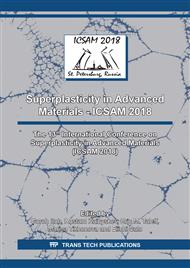p.413
p.419
p.424
p.430
p.437
p.443
p.449
p.455
p.461
Formability Analysis on Superplastic Forming of AZ91 Magnesium Alloy Sheet
Abstract:
Superplastic sheet metal forming allows the production of complex parts that are not formable under normal conditions. Superplastic sheet metal forming processes are normally based on the same common principle: the sheet metal is firmly clamped between the die halves and is blow-formed by means of gas pressure. Generally superplastic forming can only be achieved in a very narrow range of strain rates and temperature. Superplastic materials are relatively stable when deformed; this behavior is related to the observation that the flow stress of a superplastic material is very sensitive to the rate of deformation. This paper aims to study the formability characteristic of Magnesium alloy by considering variable parameters, such as the sheet thickness, forming pressure and forming temperature. The forming time of 120 minutes is constant for the formability test. Keywards: Multi dome test, superplasticity, Mg – alloy, Thermomechanical processing, Formability.
Info:
Periodical:
Pages:
437-442
Citation:
Online since:
July 2018
Authors:
Price:
Сopyright:
© 2018 Trans Tech Publications Ltd. All Rights Reserved
Share:
Citation:


